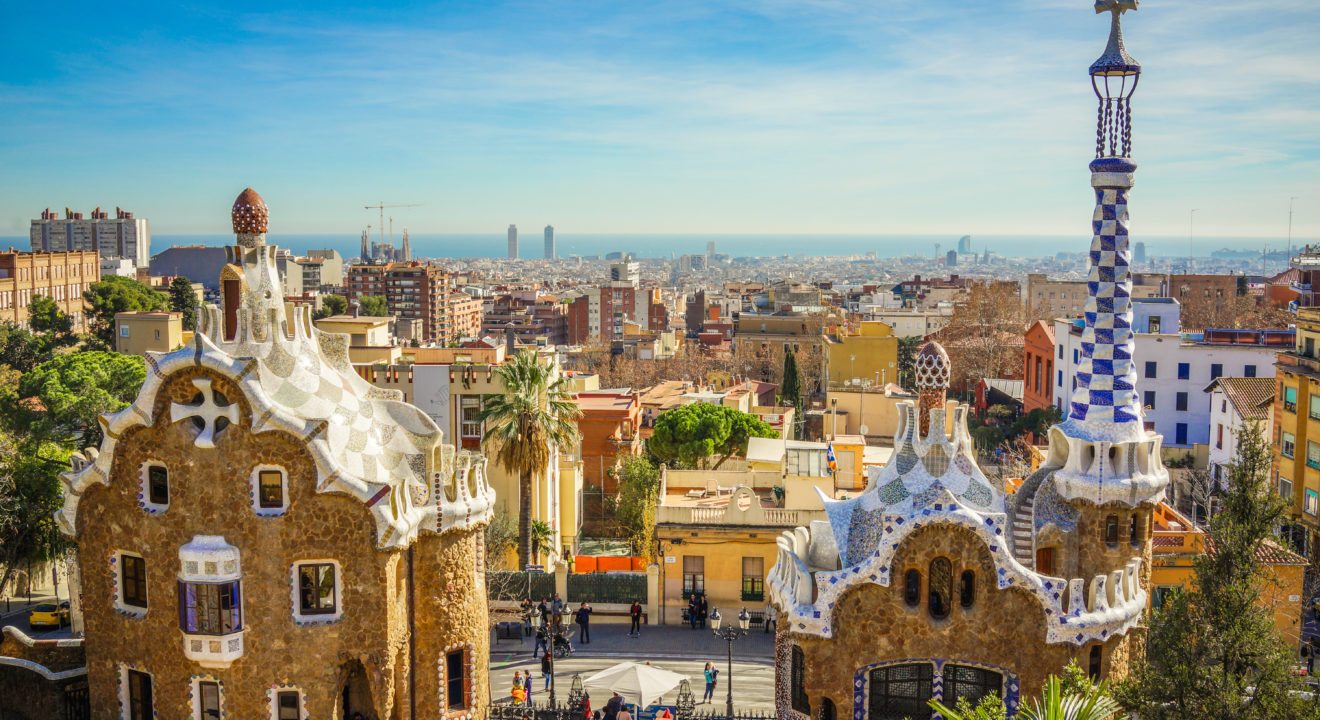Culture August 4, 2016


Woven amongst the urban streets of Barcelona are the unmistakable buildings of Antoni Gaudí, which are either vibrant in color, riddled in a series of textures and patterns, or formed with oddly shaped oblongs and curves. Gaudí’s unique interpretation of the Catalan Modernism movement contributes to Barcelona’s eclectic and diversely shaped skyline.
According to Art Nouveau Artist, Gaudí greatly loved the region of Cataluña. Because of this, many of his buildings were influenced by “[Moresque}, oriental, and gothic architecture,” all of which are “traditional Catalonian styles.” However, as UNESCO writes, Gaudí transcended the Catalan Modernism movement by including his own style inspired by the natural world with designs that incorporate organic, naturally flowing movement.
So, for those of you interested in experiencing the unusual, diverse and cultural aspects of Barcelona, here are five of Gaudí’s best-known works:
This building is easily recognizable by its pale pink and blue geometric decorations. The front of the home is adorned with a checkered design and rectangular shapes. According to The Wall Street Journal, this building was commissioned in 1882 and completed in 1888 and “marked not only Gaudí’s coming of age, but also the flowering of Catalan architecture.” The nature-inspired design is seen not only in the delicately painted yellow flowers around the windows on the outer wall but also in the wrought iron that makes its way and blends with the overgrown garden outside. Jordi Falgàs, an architectural historian who helped work on the renovation of Casa Vicens, said via The Wall Street Journal, “Gaudí created an interior that was an extension of the garden.”
According to the Casa Vicens website, which also details many of Gaudí’s other famous works, La Pedrera was designed and built from 1905-1907 and “[breaks] our understanding of conventional architecture.” The building is best known for its dreamlike landscape that mimics the waves and color of a sand dune. The building is also designed with winding, iron balconies that are meant to demonstrate the irregularities of nature. Barcelona details that La Pedrera consists of two houses that “are connected by only the façade, the ground floor, and the roof.” Inside, the house is filled with natural forms and movement; there are no right angles integrated into the design.
La Sagrada Familia is a large Roman Catholic Church that Gaudí worked on for more than 40 years. He was inspired by traditional Gothic and Byzantine cathedrals, which can be seen in the composition, texture and sharp design of the 18 towers. Through the iconography and towering sculptures, the deep connection between man, nature, and God is revealed. In fact, according to Sagrada Familia, each of the 18 towers “has a special significance…the middle is the tower dedicated to Jesus Christ and around it are four towers representing the Gospels.” Gaudí devoted the last 15 years of his life to completing this grand building; he died in 1926 before its completion. Sagrada Familia says that it is expected to be finished in the first third of the 21st century.
Parque Güell is perhaps one of Gaudí’s most eccentric and colorful works. On the Park Guell website, it states that the park took 14 years and was completed in 1914. The park was created for Eusebi Güell as a residential park, which was meant to fit sixty single-family residences. With its eccentric design, Park Güell is described as “a playground for the mind: visual jokes, like columns that stimulate palm tree trunks, rubble-surfaced arches that grow out of the ground, [and] quilts of ceramic tiles.” The park is located high above the city, integrating nature itself into its organic designs. According to Barcelona, the park officially opened in 1922 and today, 95% of the park is available free of charge for visitors from all over the world.
Gaudí’s contribution to Barcelona’s skyline is much more extensive than this list alone, but hopefully, you’ve seen enough to whet your Gaudí appetite. Some of his other diverse works include Palau Güen, Colonia Güell, El Drac de Gaudí at Finca Güell and Casa Batlló. But it really doesn’t matter which building you encounter because all of his work is imprinted with the Gaudí style – natural movement, lively colors and striking patterns.